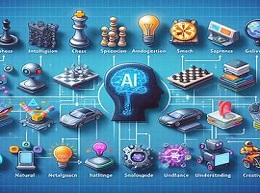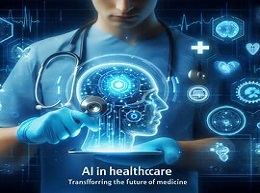Federated Learning in Healthcare: Collaborative Model Training for Patient Data

Revolutionizing Healthcare with Federated Learning
Federated learning is transforming healthcare by enabling collaborative model training while preserving patient privacy. This article delves into the applications, benefits, and challenges of federated learning in healthcare.
Understanding Federated Learning
What is Federated Learning?
Federated learning is a decentralized machine learning approach where model training occurs locally on individual devices or servers, and only model updates are shared with a central server. This allows for collaborative learning across distributed data sources while ensuring data privacy and security.
Example: Diabetic Retinopathy Detection
In diabetic retinopathy detection, federated learning enables multiple hospitals to collaborate on model training without sharing sensitive patient images. Each hospital trains the model on local data, and only model updates are aggregated for improved accuracy and generalization.
Benefits of Federated Learning in Healthcare
1. Data Privacy and Security:
- Federated learning allows healthcare institutions to train models on sensitive patient data without sharing it externally, ensuring compliance with data privacy regulations such as HIPAA and GDPR.
2. Improved Model Performance:
- By aggregating knowledge from diverse data sources, federated learning enhances model performance and generalization, leading to more accurate diagnoses and treatment recommendations.
3. Scalability and Accessibility:
- Federated learning enables scalable and accessible model training across distributed healthcare systems, including hospitals, clinics, and research institutions, regardless of geographic location or infrastructure.
Use Cases of Federated Learning in Healthcare
1. Disease Diagnosis and Prediction:
- Federated learning facilitates collaborative model training for disease diagnosis and prediction, including cancer detection, cardiovascular risk assessment, and infectious disease surveillance.
2. Personalized Treatment Recommendations:
- By leveraging federated learning, healthcare providers can develop personalized treatment recommendations based on individual patient data while preserving privacy and confidentiality.
3. Drug Discovery and Development:
- Federated learning accelerates drug discovery and development by enabling pharmaceutical companies to collaborate with healthcare institutions to analyze patient data and identify potential drug targets and therapies.
Challenges and Considerations
1. Data Heterogeneity and Distribution:
- Healthcare data is often heterogeneous and distributed across different institutions, posing challenges for federated learning model training and aggregation.
2. Communication Overhead:
- Federated learning requires efficient communication protocols and mechanisms for aggregating model updates while minimizing communication overhead and latency.
Future Outlook: Advancing Healthcare with Federated Learning
As federated learning continues to evolve, it holds immense potential for advancing healthcare research, diagnosis, and treatment. By fostering collaboration and innovation while protecting patient privacy, federated learning will play a crucial role in shaping the future of healthcare.
Empowering Collaborative Healthcare
In conclusion, federated learning is revolutionizing healthcare by enabling collaborative model training while preserving patient privacy and security. By harnessing the collective intelligence of distributed data sources, healthcare providers can unlock new insights, improve medical outcomes, and deliver personalized care to patients around the world. As federated learning gains traction in the healthcare industry, it promises to usher in a new era of collaborative healthcare research, diagnosis, and treatment, driving innovation and improving lives.














